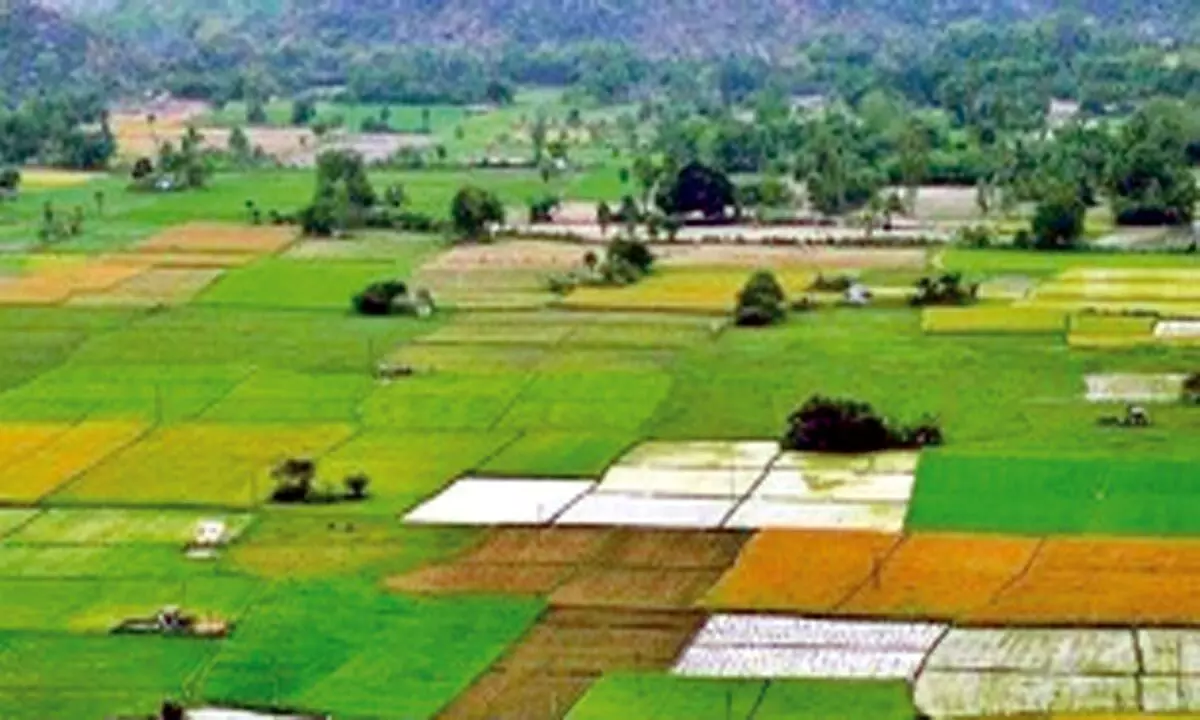Agri land prices in modest recovery since May
After a drastic fall, agricultural land prices peaked again in Feb, almost matching the earlier peak. However, prices fell 20% by May and are showing signs of a modest recovery until July: IIM Ahmedabad-SFarmsIndia Agri Land Price Index (ISALPI)
image for illustrative purpose

Wider Representation
- Latest data included over 7,000 observations spread across over 450 districts in 26 States/ UTs
- 1st tranche was limited to fewer States (MP, Gujarat, Rajasthan, Haryana, Kerala, Punjab, West Bengal and Chhattisgarh
- In 2nd tranche, top-7 States (Telangana, AP, Maharashtra, TN, Karnataka, UP and MP) represented over 85% of the listings
Mumbai: Prices of agricultural land in India peaked during February. During the second wave of Covid, prices plummeted to a new low during July-August of 2021. The fall amounted to nearly 24 per cent within six months, says a study by Indian Institute of Management -Ahmedabad.
On November 25, 2021, Dr Errol D'Souza, Director IIM-A, and Kamesh Mupparaju, CEO SFarmsIndia, signed an MoU to jointly maintain and update IIM Ahmedabad-SFarmsIndia Agri Land Price Index (ISALPI). The programming algorithm for the index development was ideated and first executed in 2022 by Prof Prashant Das, a Professor at IIM-Ahmedabad
Talking to Bizz Buzz, Prof Prashant Das says: "The index will continue to improve with the arrival of new data. In particular, its volatility pattern may appear different. Also, with more
geographically dispersed observations in the future, one should expect a more representative national level index. Of course, more granular series will have more use."
After a drastic fall, the prices peaked again in February, almost matching the earlier peak. However, prices fell 20 per cent by May and showing signs of a modest recovery until July, says the findings of ISALPI, which is a 'constant-quality' agricultural land price index for India.
The study is supported by the Misra Centre for Financial Markets and Economy at IIM Ahmedabad. SFarmsIndia, a Hyderabad-based peer to peer marketplace for agricultural lands, provides data for index development. The second release of ISALPI is now published. The
district ranks are updated.
The latest tranche of data included over 7,000 observations spread across over 450 districts in 26 States/Union Territories (UTs). Compared to the first tranche, where the data was limited to fewer States, this time there was a sizeable representation from Madhya Pradesh, Gujarat, Rajasthan, Haryana, Kerala, Punjab, West Bengal, and Chhattisgarh.
In the second release, the top seven States (Telangana, Andhra Pradesh, Maharashtra, Tamil Nadu, Karnataka, Uttar Pradesh, Madhya Pradesh) represented over 85 per cent of the listings. The next six states (Gujarat, Rajasthan, Haryana, Kerala, Punjab and West Bengal) represented additional 10 per cent of the data. With superior data coverage, more geographic granularity is desirable.
The index should be of interest to existing agri-land owners, prospective buyers, financiers, policymakers, local governments, environmentalists, and agri-entrepreneurs. Existing landowners may use the index to assess how the valuation of their holdings has evolved over time. Sellers and buyers could use this information to assess the historical risk and return and predict these metrics for the future to prudently decide on their buying/selling decision. ISALPI may be useful in reducing litigation cost in some situations, when agri-land is acquired for public use (like highway) or private interests like a manufacturing facility) by informing the price movements over time.
Uncertainty in price movements may increase the cost of financing or insuring the underlying assets. The transparency offered by the land price index may not only reduce the landowners' underwriting costs, the financial market products (insurance, mortgage, etc.) the availability and cost of financial products will also improve, says the study.
Researchers could use this information to study how economic events and factors are associated with price movements in a specific asset class. Benchmarking land price movements in rural or semi-urban areas to a standard land price index will signal the potential conversion of agricultural land into real estate. Policymakers may use it to modulate their policies.
ISALPI provides a big picture idea of how the agriculture land prices are evolving in India. The price index levels in January 2019 are standardized at 100. If the index moves up by 25 points within a year, this implies that on average, agriculture land has appreciated by 25 per cent between these twelve months, Prof Das explained.
ISALPI provides a big picture idea of how the agriculture land prices are evolving in India and focuses solely on capital appreciation. The discount rate estimate must also include the projected income yield from the crops (or farmland rental). Usually, this yield is small and varies in the range of 1-2.5 per cent per year.
The index will continue to improve with the arrival of new data. In particular, its volatility pattern may appear different. Also, with more geo-graphically dispersed observations in the future, one should expect a more representative national level index. Of course, more granular series will have more use.
- Prof Prashant Das, Professor, IIM-Ahmedabad

